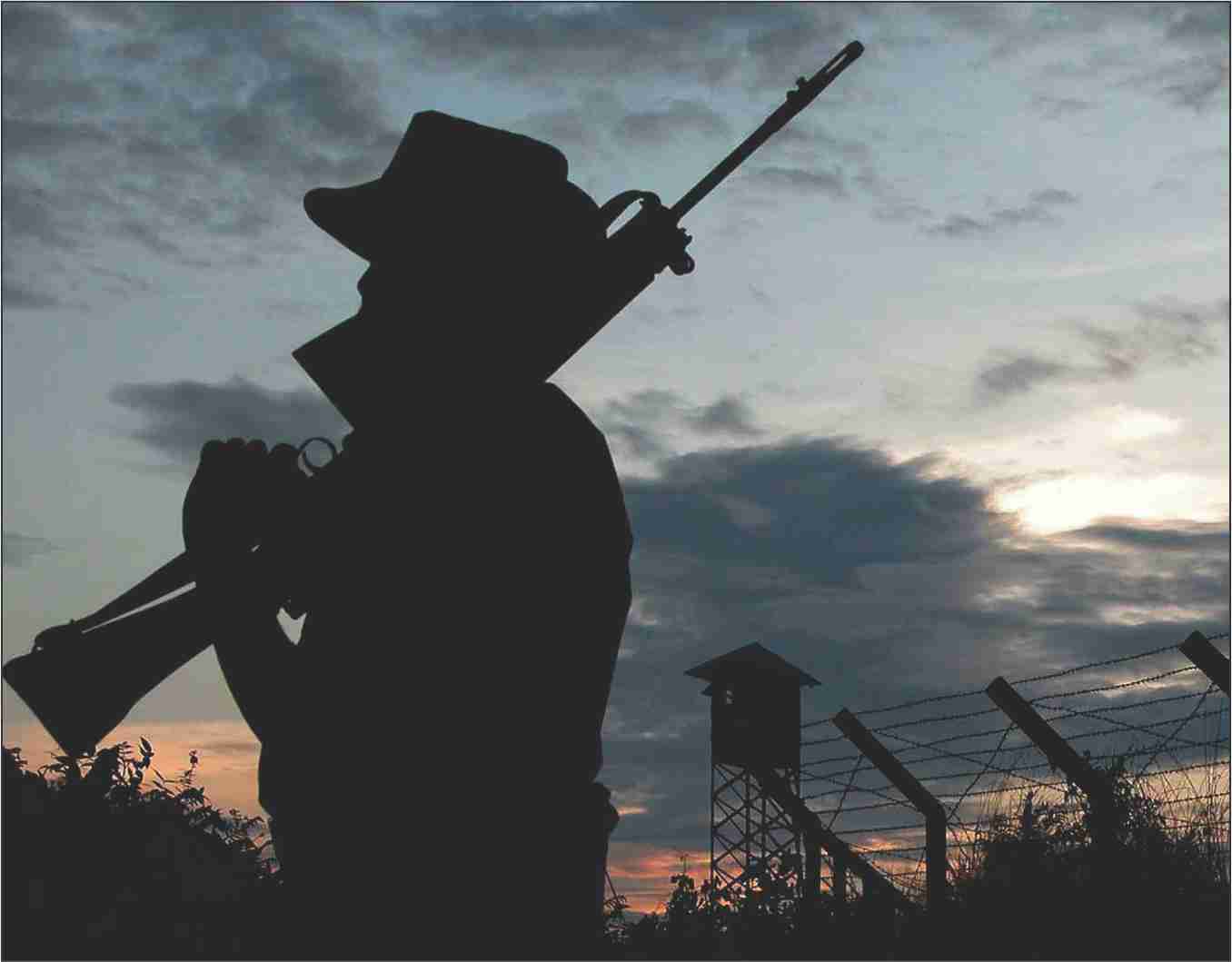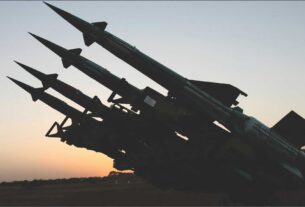|
It has become a truism of military operations that static defences tend to induce a sense of complacency and false invincibility among the defenders.
Hence a pervasive use of day and night sensors that are intended to expand battlefield awareness at all times. Nonetheless, in the final analysis, everything depends on the presence, efficiency and morale of personnel assigned responsibilities as first responders. The best catchall phrase came from American General George C Patton who said:”Fixed fortifications are a monument to man’s stupidity”. The extent of which can best be judged by the anecdote of the French General positioned in the Maginot Line who was asked to advance against the Germans. He locked up the fortress and handed the keys to a colleague. In his absence the colleague was posted out and he took the keys with him. The French General, forced to retreat to the Maginot Line, found himself locked out of his own fortress! Managing weak zones While the German Siegfried Line (West Wall) did serve a limited purpose during World War I the French Maginot Line with underground rail tracks and air-conditioned bunkers was left untested by the Germans who raided France through The Netherlands and Belgium in the south in a flanking move that largely avoided the Maginot Line. Border security fortifications lend themselves to many different types of breaching techniques that involve everything from direct assault, to flanking manoeuvres to underground tunneling as did the North Koreans in their long-term plans to invade the US ally South Korea. That is what the Indian security forces are discovering to their consternation when confronted by frequent intrusions by Pakistan sponsored terrorists both through the Line of Control as well as the International Border and the Chinese studied sallies across a non-existent Line of Actual Control designed to show up India as a ‘paper tiger’ incapable of any real defences against Chinese machinations. Sensors in the context of the Chinese have long been a bugbear for India. In 1965 soon after the Chinese had tested their first nuclear weapon a joint US Central Intelligence Agency and Indian Intelligence Bureau team of mountaineers climbed the Nanda Devi massif with the intention of planting a nuclear (plutonium) powered listening device that would monitor Chinese military communications especially around Lop Nor in central China where its nuclear facilities and delivery vehicles were being created. Unfortunately, the mountaineers were struck by an avalanche and the nuclear battery was lost in the snow in the Nanda Devi sanctuary-a ticking time-bomb for India. More recently after the Chumar and Depsang intrusions by the People’s Liberation Army in the Jammu and Kashmir salient in the western reaches of the LAC, India put up a long-range camera to detect movements in that segment. It turned out that the PLA paid a visit, took down the camera and smashed it. The bits and pieces were returned to Indian security forces. That this could happen without the kind of fight that erupted in 1967 when the PLA tried strong arm tactics at Nathu La in the Sikkim sector in the east speaks volumes. The major problem along the Line of Actual Control is the inability of the Indian side to detect and counter major Chinese intrusions as in Chumar and Depsang some of which lasted for weeks before the Chinese were persuaded to return to their side of the LAC. Something similar is beginning to happen along the Line of Control vis-à-vis Pakistan in Jammu and Kashmir. The recent terrorist intrusions in Gurdaspur and Udhampur through the Indian barbed wire fence went unnoticed and unchallenged till the terrorists began their depredations. In one instance the terrorist was nabbed by civilians whom he had taken hostage. This speaks poorly of all the static defences that have been set up along the International Border in Gujarat, Rajasthan and Punjab and the LoC in Jammu and Kashmir. One can only wonder at what happened to the battlefield surveillance radar with a night-time range of two kilometers developed by the much maligned Defence Research and Development Organisation or even the LORROS (long range reconnaissance and observation system) acquired from the Israelis? While the land borders remain as porous as ever in spite of the massive investment in technical means of surveillance/reconnaissance/intelligence gathering the recent anniversary of the Mumbai carnage of 26 November, 2008 saw dozens of reports and analyses in the media highlighting the shabby state of affairs in maritime border security as well. A string of radars has been set up. Two interceptions (one controversial) have been reported along the margins of the Exclusive Economic Zone but the nitty-gritty requirement of registration of all fishing boat and fitment of transponders on every Indian vessel to enable “identification friend or foe” (to be able to ensure that the vessel in the vastness of the ocean is indeed a hostile element) is missing. Along the coastline where State police echelons are supposed to patrol the situation is decrepit. The only reason why there has been no repeat of Mumbai (there was one before 2008) is because Pakistan is reveling in the spectacular intrusions across the land borders in Punjab and Jammu and Kashmir. India is are losing in quick succession some of our bravest and most effective counter-terror specialists. Under these circumstances what type of sensors will be effective? The LORROS and the battlefield surveillance radars working in conjunction with airborne surveillance drones should be able to give a fairly clear picture of what is happening on our periphery. Making forecast Clearly, Pakistan is able to find chinks in our armour because of shortcomings in our standard operating procedures and the absence of adequate manpower. Counter-insurgency, counter-terror and the ability to dissuade a neighbor from intruding into one’s territory also depends to a great deal on the amount of manpower one is able to deploy constructively. If terrorists manage to pop up from under our feet there is need to review the whole gamut of peripheral security including the need to deploy seismic sensors to ascertain whether Pakistan has taken a leaf from North Korea book of tricks to create tunnels under the barbed wire fence. Three were discovered (one accidentally). There could be more. For an assessment of effective sensors be it in the Himalayas or the coastline we may well have to fall back on a 1958 study by the Indian Army Remount and Veterinary Corps which found that the hearing and sight of a dog is a valuable military asset. Some units of the Indian Army deployed along the Line of Control have found it useful to nurture local pariah dogs to give early warning of intruders. This shows that there is a paucity of this valuable asset at the point where it is most needed-the forward outpost. The Army produces about 250 trained military dogs per year, a miniscule number compared to the length of India’s frontiers. On several occasions STRATEGIC AFFAIRS has suggested a major shift in the method of deploying the K9 Squad (canine). It makes little sense to show with great aplomb on television a ferocious German Shepherd dog being swung in the air by a fully padded and protected “intruder”. That ferocious quality should be utilized on the frontline to see and chase terrorists. In cordon-and-search operations, especially in thickly forested patches, dogs trained to attack could better pinpoint terrorist locations and prevent the deaths of some of our bravest and best counter-terror officers who have a glorious tradition of leading from the front. An exchange of gunfire at night is by and large a generalized spray of bullets in the direction of sound or muzzle-flash. A stealthy attack by a trained dog could make a difference. |
|





